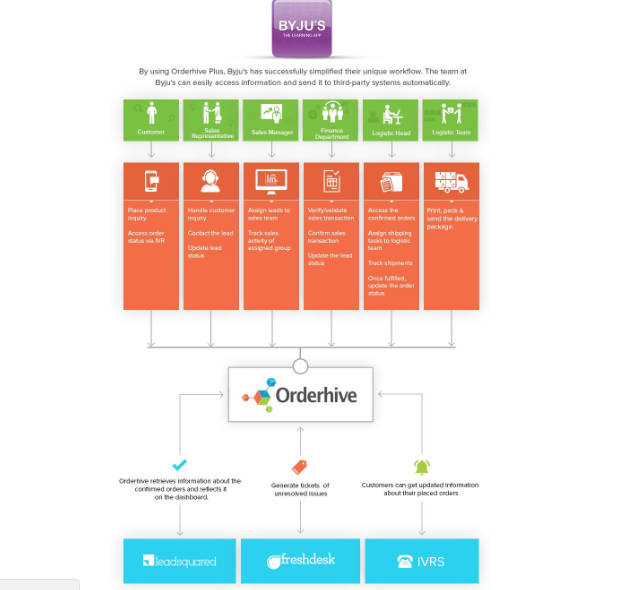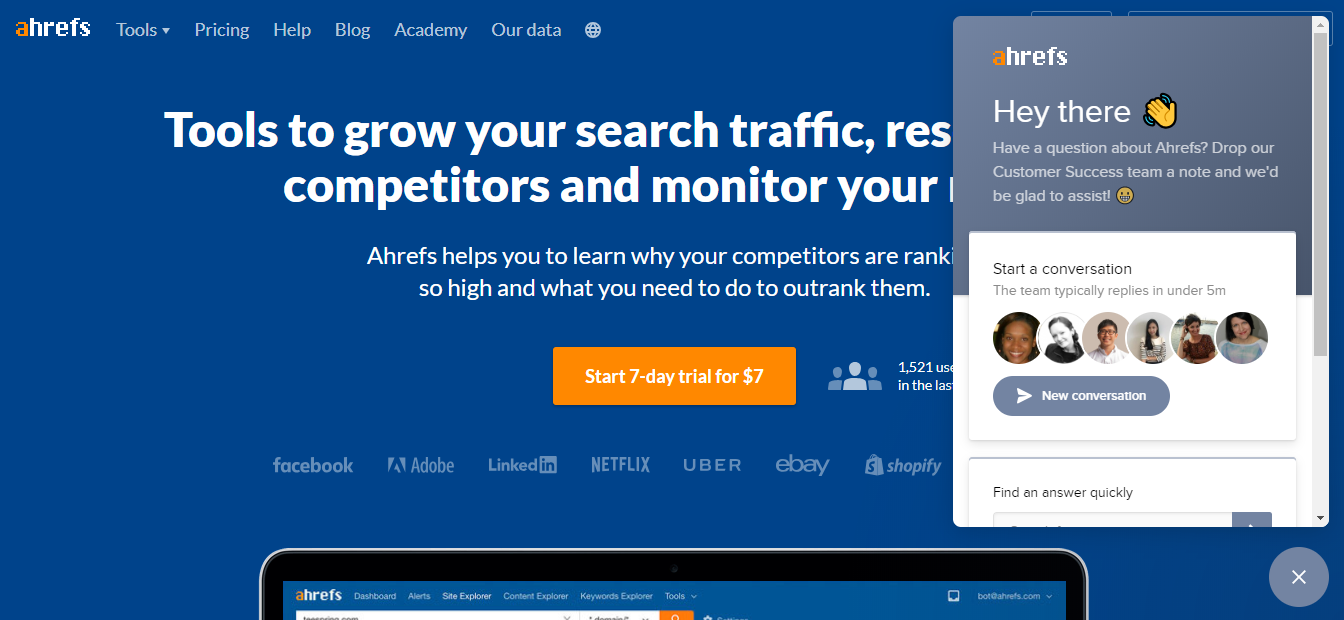So what if you don’t have budgets to spend on ads? Are you doomed to get obscure in this online labyrinth?

More and more consumers are making a purchase from an online store compared to visiting brick and mortar stores. With 67% of millennials and 56% of GenXers preferring to shop online over visiting a store in person, it’s no secret that e-commerce sales are exploding.
Retailers and ecommerce-preneurs need either big ad spends or stand out to get them noticed.
So what if you don’t have budgets to spend on ads? Are you doomed to get obscure in this online labyrinth?
Totally not.
The great news is more than half of the consumer population prefers shopping online. Simultaneously, e-commerce is growing at nearly 23%, year on year. This year, e-commerce sales are predicted to be more than $2.4 billion.
At the same time, it is getting tougher each passing day to drive traffic and revenue to e-commerce stores.
In this article, I’ll show you the 5 clever and proven ways to drive traffic to your e-commerce store and simultaneously fulfilling customer orders smoothly without spending a bigger budget.
Sounds impossible?
It’s not. Let me show you how.
1. Get an (inventory management) tool that controls your ingoing and outgoing stock – for more sales
For any e-commerce business, focusing on little things that affect customer response to your store is important. No stock, inefficient order fulfillment, poor return policies are some things that can drive away any customer. To avoid this, knowing where and how the inventory is moving is crucial. Businesses need to prioritize areas where to focus time, energy and money and processes to streamline and run smoothly.
Possessing the data about what sells more or less – can save you from being overstocked and understocked. For instance, your most sold products need to be in stock all the time. While the products not picking well – if stored in abundance can add to your storage overheads.

This is where an inventory management tool is of importance. The real-time updates about when to reorder your stock increase the inventory turnover time by keeping fewer slow-moving products and increasing the stock of profitable items.

Let’s take the example of Byju’s, the learning app – the Indian unicorn.
They have a team of 1,000+ deployed across sales, finance and logistics department. The 200+ sales reps handle customer queries and product demos. However, some of the pain points were:
- It was difficult for the sales managers to track the daily activities of the sales reps. As a result, they did not have records of the sales conversions and its impact on the revenue generated.
- The logistics team was unable to keep a track of the shipped, delivered and unfulfilled orders. This resulted in wasting time in delivering the orders.
- The support department was facing issues in solving customer queries because the information about the orders and issues was not updated regularly.
Thus, the process from lead generation to lead fulfillment was not-so-streamlined.
Byju’s deployed Orderhive, an inventory management tool, which acts as a centralised repository for sales managers to keep a track on the daily activity and progress on the targets of the sales reps.
At the same time, Orderhive helps the financial process by generating a detailed payment report from the system. Simultaneously, from the pickup, shipping, delivery to tracking the orders, the entire logistics workflow is aligned. Byju’s third-party integrations such as Freshdesk, Lead Squared and IVR technology are also seamlessly integrated into their system.
Also read: 10 mistakes that can kill your e-commerce business
In simpler terms, the automation Byju’s employed using an inventory management tool are:

With Orderhive automating the entire order & inventory workflow, Byju’s witnessed a great reduction in their lead time – steadily strengthening sales numbers.
#2. Start with streamlining your checkout process to boost conversions
A constant problem faced by e-commerce stores is cart abandonment caused by any kind of friction in the checkout process.
68% of shopping carts abandoned annually cause brands $4.9 trillion in sales. Out of every 10 that put an item in their cart, nearly 7 of them will leave the site without making a purchase.
As an e-commerce store owner, you would ideally want to create a simple navigation for your website or reduce the elements that slow down the customer from reaching the checkout phase.
The most common reasons for cart abandonment are shown in the chart below. Reducing or eliminating them can remove the common friction points for the buyers.

The 5 common pitfalls in the checkout process that you can easily tweak or prevent are:
- Remove unnecessary text, buttons, colors and navigation
- Provide guest checkout and make sure it has as few steps as possible
- Let the checkout be mobile-friendly
- Offer multiple payment options (that are secure)
- Make sure that the checkout page has enough details including the contact information and product details
Here’s more proof. Clean Program increased their conversions by 76% by streamlining their checkout process – via more engaging cues and intuitive design on the checkout page.

#3. Incorporate live-chat
Nearly 83% of shoppers require help at some while making a purchase.
No wonder why live chat tops the highest customer satisfaction level! When a customer wants to learn about a service or product, live chat is the easiest and quickest way to do so.
The live chat box sits quietly at the right end corner of the screen until the user decides to click on it. When someone types a question, it is answered in a flash!

Often, customers using live chat are either considering to make a purchase or in the process of making a purchase.
Live chat tools such as UserEngage, LiveChat Inc, ProProfs and Freshchat help in the decision-making process since the customer’s queries are answered in a jiffy by instant real-time communication. This can mean the difference between gaining a customer and bouncing a lead.
There is data to back this. A Forrester Research reports that almost 44% of online customers say that having their questions answered by a live person while purchasing is one of the most important features of a website.
Here are some examples of live chat done right:
Ahref, a toolset for SEO backlinks, competitor analysis and keyword research goes a step ahead and tells you that their staff typically reply within 5 minutes. They show the customer support team who’ll be answering your queries.

SnapEngage, a live chat software for websites and enterprises asks for the name, email id and the question in their live chat box.

Music retailer Prymaxe uses a caption in their live chat box which is hard to say no to.
Also read: 3 things that could make or break your e-commerce startup

Live chat enables you to respond faster to a lead or an existing customer to create a positive experience to drive sales faster.
4. Incorporate product videos
You can no longer afford to ask the question, should I incorporate video into my e-commerce store?
Instead, you should be answering, how do I make the most out of videos?
A few more statistics (by Wyzowl) proving the importance of incorporating videos on either your landing page (to build excitement) or on the product page (to provide the viewer with additional product details) are:
- Nearly 50% of people say “my product won’t look the same when it arrives” as their biggest concern while shopping online.
Create product videos from all angles and even in use to persuade them to make a purchase.
- 33% prefer to learn about products by watching a video.
Videos are quick and engaging. The text is too tedious to read. Images don’t give much information. No one has time for a sales call. Videos show people how the product appears in use, ultimately encouraging them to make the purchase.
- 69% people say product demo’s best assist them to make a purchase decision.
A product demo gives a more in-depth overview of the product.
A tip being, when creating a product demo, ensure that the features and benefits are highlighted in a clear manner. The demo should appear on the page where the product is being sold with a “buy” button in sight.
The length of your videos is a determining factor when it comes to effectiveness.
You need to make sure that they provide useful information and short enough that the visitor watches them entirely.
Since the attention span of the average internet user is around 8 seconds, the first few seconds are critical in capturing the viewer’s attention.
Also read: How to scale your e-commerce company from zero to $100M
The 4 formats of videos, known to boost e-commerce conversions are:
Product demo
Showing the product in action has helped many e-commerce retailers increase their conversion rates.
Use either influencer in these videos who your audience regards as an authority in your product. Or use models who your customers can easily relate to, while learning about the different features to make the most out of the purchase.
How-to-videos
Many consumers do not know how to use a product, which is why they shy away from making the purchase.
How-to-videos are a great opportunity to offer stepwise instructions of a complicated product.
Allow the shopper to visualize how the detail-oriented product works and how they can use the product in their life.
Comparison video
Sometimes the consumer doesn’t make the purchase due to an analysis paralysis arising out of too many choices.
A comparison video, which is unbiased and puts your product besides your competitors helps the audience understand how the products are different from each other.
Product reviews and user-generated video
Ask your loyal customers to record a video of how satisfied they are with your brand and how the product works.
In the reviews, let the customer talk about how they use your product, the functions and features they find the most useful and how has the product improved their life.
Potential buyers are more likely to make a purchase when they see real people get great results using your product.
5. Incorporate social proof
We, humans, are social creatures. This means social proof influences our decisions.
Social proof is important for an e-commerce store because:
- Every time a person makes a buying decision, there is a level of anxiety associated. This “purchase anxiety” is because they have not touched or seen the product in person by people they’ve never met.
- To dispel this anxiety, they look around for the actions of others. They want to know the experiences of other people using the product. They want to know that the choice they’re making is also the choice other people have made.
If your marketing can convey “We’re awesome. Our product is great. See all the people who’ve bought it. So go ahead and buy,” It works wonders.
You need proof that there is a group of people who’ve purchased your product and are happy with their choice. There are some ways brands selling online can use social proof:
Ratings and reviews
When was the last time you made a purchase from Amazon without looking at the ratings? Ratings and reviews are powerful when opinions of the larger population are taken into account.
The online cosmetic store Sephora shows that 502 people have reviewed this product.

Influencer endorsements
If your business or product has ever received a compliment from a well-respected authority, go and add that to your home page.
Tim Ferris features an endorsement from the best-selling author Phil Town on the landing page of his book The 4-Hour Work Week.

Badges
Badges, seals and certificates boost your credibility to potential customers. The well-known and trusted badges are:

Media logos
Have you been featured in a reputed publication?
Did a popular website interview you or feature your product or service?
Also read: 5 ways AI can optimise e-commerce logistics, planning, and engagement
Here’s an example from Roma Moulding.

Don’t be afraid of sharing such credible information with your customers. This is strong social proof!
Customers trust other customers. The best way to improve conversions is by leveraging social proof. This strategy costs you nothing.
Show your best numbers. This could be the number of people who visited your website, downloaded your app or review your product. Best, if they add their photos. People trust customer photos more than stock images.
In conclusion
Concluding, running and scaling an e-commerce store doesn’t always cost big money.
However, with all the competition, you need to know your audience and tailor the product and messaging to the right personas. Take advantage of the tactics shared in this article to prevent going broke by spending on ads.
Whatever you build, keep the customer at the core. Are you solving a problem for them?
Also, check the status of what’s working and what’s not, regularly.
Different strategies work for different brands. Let nothing discourage you, not even the strategies that don’t bring in tons of traffic and business straightaway.
There has never been a better time to think outside of the box instead of the traditional ads to stand out in the e-commerce market.
—-
e27 publishes relevant guest contributions from the community. Share your honest opinions and expert knowledge by submitting your content here.
Featured image: Unsplash
The post 5 proven ways to accelerate your e-commerce sales on a shoestring budget appeared first on e27.